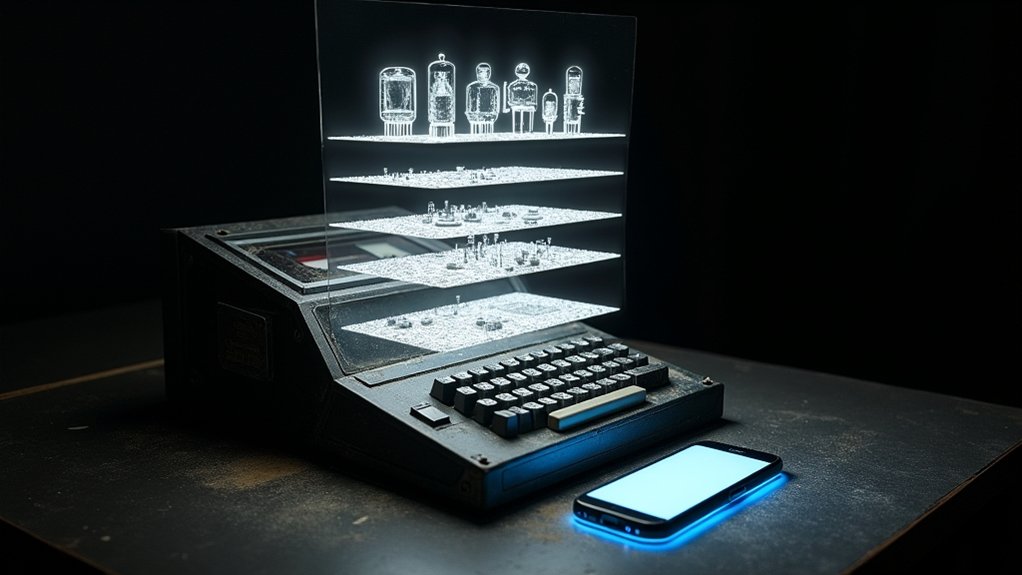AI’s journey hasn’t been the smooth path from Turing to ChatGPT that tech evangelists love to pitch. The reality? Decades of spectacular face-plants, dried-up funding, and countless researchers banging their heads against walls. Early AI optimists thought they’d crack human-level intelligence by the 1970s. Spoiler alert: they didn’t. Instead, AI lurched through multiple “winters” before machine learning finally made things interesting. The full story gets way messier.

While many point to ChatGPT as artificial intelligence‘s crowning achievement, the real story begins over 70 years ago with a British mathematician who changed everything.
Alan Turing didn’t just theorize about machines thinking – he revolutionized the entire concept.
In 1950, he dropped a bombshell called the “Imitation Game,” now known as the Turing Test.
Simple idea, really: if a computer can fool you into thinking it’s human, well, maybe it’s actually intelligent.
But here’s the kicker – everyone conveniently forgets the decades of spectacular failures that followed.
The 1956 Dartmouth Conference coined the term “Artificial Intelligence,” and boy, did they have high hopes.
During the war, Turing’s work as a leading cryptanalyst at Bletchley Park helped shape his views on machine intelligence.
Early researchers thought they’d crack human-level intelligence in no time.
Spoiler alert: they didn’t.
The 1970s brought the first AI winter, when funding dried up faster than a puddle in the Sahara.
The 1980s saw a brief revival with expert systems – basically glorified if-then statements that could diagnose diseases or recommend repairs.
Not exactly the sci-fi future everyone dreamed of.
But then something interesting happened.
Instead of trying to program intelligence directly, researchers started letting machines learn from data.
Machine learning was born, and it was a game-changer.
Fast forward to 2012, and suddenly deep learning explodes onto the scene.
Thanks to better computers and massive datasets, neural networks started doing things that seemed impossible just years before.
They’re recognizing faces, beating humans at Go, and now they’re writing poetry that doesn’t completely suck.
Turing proved that artificial systems might be able to exceed natural intelligence in specific tasks while still falling short of full human capabilities.
The truth is, AI’s history isn’t a straight line of progress – it’s a messy series of breakthroughs, setbacks, and unexpected turns.
From Turing’s theoretical machines to today’s language models, we’ve come a long way.
But let’s not forget the countless researchers who failed, pivoted, and persevered when AI wasn’t cool.
They’re the real heroes of this story.





